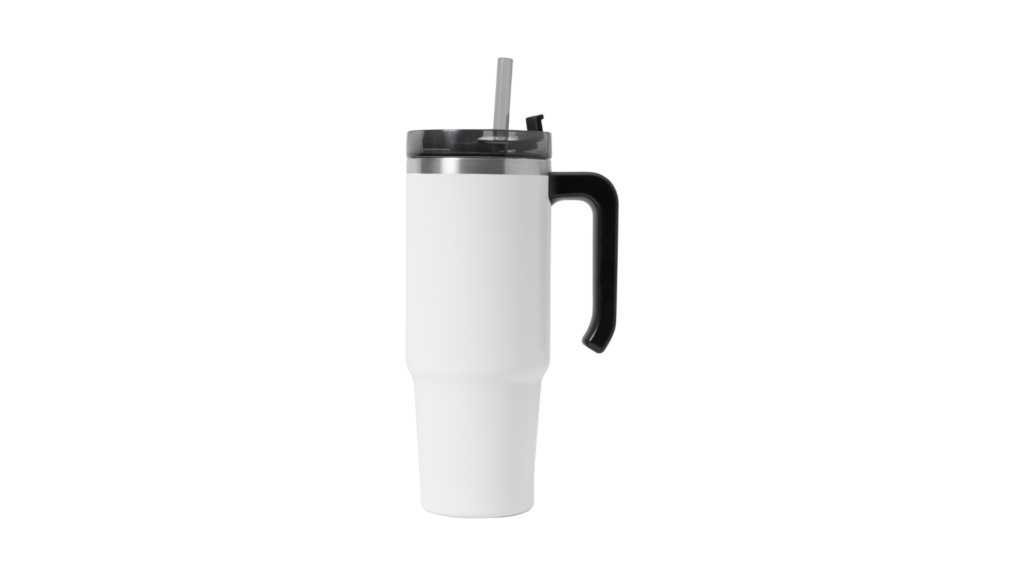Recently it has been confirmed that the extremely popular Stanley tumblers contain lead.
Buzz began on social media about there being lead in the tumblers and Stanley responded to the claims stating that their tumblers do contain lead. A spokesperson for the company clarified with a statement saying that lead is used in the manufacturing process of the tumblers, but to be exposed to the lead, the product would need to become damaged.
The lead is found in a pellet on the bottom of each tumbler which is covered by a circular stainless-steel barrier. The pellet is used to seal the product’s vacuum insulation, and it is not accessible unless the product is damaged and the stainless-steel barrier comes off. The same spokesperson claimed the possibility of the product being damaged and exposing the pellet is possible, but rare.
The Risks of Exposure to Lead
A spokesperson for the Center for Disease Control and Prevention stated, “When lead is used in manufacturing, there is a risk of lead exposure for consumers of those products, especially for products intended for use in food consumption, like drinkware.”
Lead exposure can lead to lead poisoning which can be very dangerous. Lead poisoning can happen most commonly from breathing in lead dust or particles, or from touching a surface where lead is present then touching one’s nose or mouth.
“Once lead enters the bloodstream, it can accumulate and cause severe health consequences, including cardiovascular disease and brain damage. There isn’t a system in your body that isn’t harmed by it.” stated Ronnie Levin, a veteran scientist of the U.S. EPA.
Symptoms of lead poisoning in adults can include high blood pressure, joint and muscle pain, memory and concentration trouble, headaches, stomach pain, mood disorders, and reproductive difficulties.
Symptoms of lead poisoning in children can include developmental delays, irritability, weight loss, fatigue and low energy, gastrointestinal symptoms, hearing loss, and seizures.
Now that we have talked about the severity of lead poisoning, what about your Stanley tumbler?
The spokesperson for Stanley stated, “Rest assured that no lead is present on the surface of any Stanley product that comes into contact with the consumer nor the content of the product.”
However, the product does contain lead and therefore there is no guarantee that a consumer will never come into contact with or be exposed to this lead.
Vicki Iannotti, a pediatrician at ColumbiaDoctors, stated that “If a parent lets their child fidget with an item like a Stanley mug after the bottom cap has come off, there is a very possible and likely transfer of microparticulate lead via normal hand-to-mouth behavior in young children.”
Similarly, Levin expresses that “If a child puts the bottom of one of these cups against their mouth or rubs the surface with their fingers then puts them in their mouth, contamination can occur.”
Both doctors suggest that the risk of illness from a single instance of exposure is low, but the risk is still present with these products.
The World Health Organization says that “there is no level of exposure to lead that is known to be without harmful effects.”
So are these products unsafe in the market?
As much as Stanley is trying to assure its consumers that the risk of exposure is extremely low, we know that there IS still a risk.
Given that the lead pellet is part of the product, there will always be a potential risk of exposure.
In cases where the product does become damaged, the pellet can be exposed without a consumer noticing. Additionally, if the pellet is exposed and then the tumbler is moved around, the lead could then be spread to many other surfaces making the risk of exposure even higher.
Massachusetts law states that product manufacturers produce and sell products that do not pose an unreasonable risk to consumers.
Manufacturers are required to:
- Eliminate dangers, if possible
- Guard against those dangers if the danger cannot reasonably be eliminated
- Warn against these dangers when the danger cannot be avoided otherwise.
In the case of these tumblers, Stanley did not warn against this risk until consumers took to social media with allegations that the company then had to address.
Furthermore, the spokesperson for Stanley stated, “Our engineering and supply chain teams are making progress on innovative, alternative materials for use in the sealing process,”. If reasonable alternative designs are available, Stanley must use those alternatives rather than exposing the public to the unnecessary risk occasioned by lead. There are multiple other tumblers out in the market that do not contain lead at all. In other words, it appears this risk could have been eliminated by Stanley.
Lastly, Stanley has a section of their website where a customer can submit a claim through their lifetime warranty if the tumbler becomes damaged. Therefore, the risk of lead exposure from damaged tumblers was not just knowable by Stanley; but also known..
Stanley put a product out onto the market that more likely presents a dangerous risk of harm to its consumers. If people get injured as a result, Stanley may be exposed to significant litigation and the likelihood that juries will be asked to hold Stanley accountable.
At DILLER LAW, we represent families of people injured or killed by hazardous products. If someone in your family has suffered an injury because of a hazardous product, you should consult with an experienced lawyer who can evaluate whether or not the manufacturer, and/or seller of the product failed to keep you safe and free from foreseeable danger.
The lawyers at DILLER LAW do not charge a fee for the initial consultation because we generally work on a contingency fee, and we understand how difficult financially it is for those who have recently suffered an injury resulting from a hazardous product.
For a free legal consultation call us now at (866) 563-7599.
Sources:
https://www.today.com/health/news/stanley-cups-lead-rcna135513

